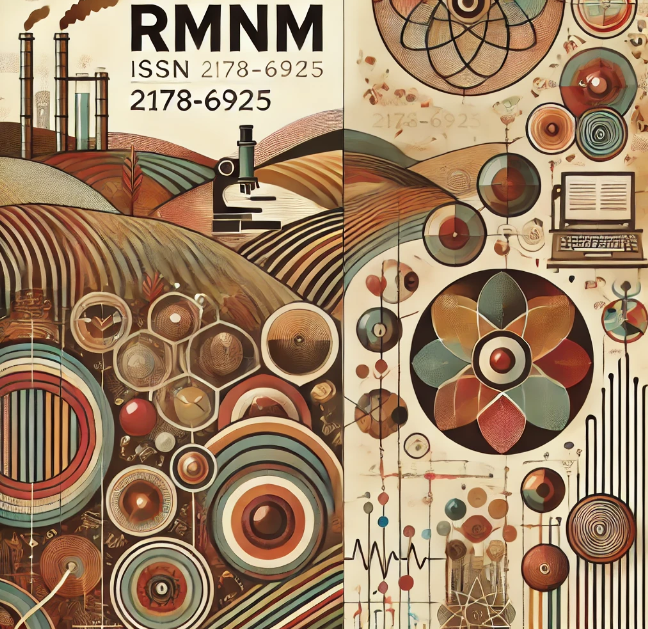MILK FRAUD: TYPES AND MAIN METHODS OF OBTAINING RESULTS
DOI:
https://doi.org/10.61164/rmnm.v9i1.2831Keywords:
Milk adulteration, Quality control, Consumer healthAbstract
The article addresses frauds committed in the dairy industry, focusing on the most common types of adulterations and the main detection methods. Milk frauds are illegal practices that compromise product quality, endanger consumer health, and affect market integrity. The main objective is to highlight the different forms of adulteration, such as the addition of water and substances to mask dilution, and to discuss the laboratory methods used to identify these frauds. The methodology includes a literature review of scientific studies that analyze the types of fraud and the effectiveness of detection methods. The results highlight the need for rigorous quality control practices to ensure food safety and consumer protection. It concludes that the implementation of advanced detection technologies and awareness throughout the production chain are essential to combat milk fraud and ensure consumer confidence.
References
AZAD, T., AHMED, S. Adulteração comum do leite e suas técnicas de detecção. FoodContamination 3, 22 (2016). https://doi.org/10.1186/s40550-016-0045-3
SOUZA, Simone S. et al. Monitoring the authenticity of Brazilian UHT milk: A chemometric approach. Food chemistry, v. 124, n. 2, p. 692-695, 2011. Disponível em: https://www.sciencedirect.com/science/article/pii/S0308814610007855
XIN, Hao; STONE, Richard. Chinese probe unmasks high-tech adulteration with melamine. Science, v. 322, n. 5906, p. 1310-1311, 2008 Disponível em:
https://www.science.org/doi/abs/10.1126/science.322.5906.1310
ABURTO, Nancy J. et al. Effect of lower sodium intake on health: systematic review and meta-analyses. Bmj, v. 346, p. f1326, 2013. Disponível em: https://www.bmj.com/content/bmj/346/bmj.f1326.full.pdf
POONIA, Amrita et al. Detection of adulteration in milk: A review. International journal of dairy technology, v. 70, n. 1, p. 23-42, 2017. Disponível em:
https://onlinelibrary.wiley.com/doi/abs/10.1111/1471-0307.12274
DOS SANTOS, I. P., Oliveira Sousa, F. M., & Melo, T. A. (2019). Análise microbiológica e identificação de adulterantes em leite in natura e pasteurizado comercializado em Jequié-BA. Revista InterScientia, 7(1), 66–82. https://doi.org/10.26843/interscientia.v7i1.1004
CASSOLI, Laerte Dagher. Validação da metodologia de infravermelho com transformada de Fourier para identificação de adulteração em leite cru. 2010.
Tese de Doutorado. Universidade de São Paulo. Disponível em: https://www.teses.usp.br/teses/disponiveis/11/11139/tde-20102010-
/?gathStatIcon=true
FIRMINO, Fernanda Cristina et al. Detecção de fraudes em leite cru dos tanques de expansão da região de Rio Pomba, Minas Gerais. Revista do Instituto de Laticínios Cândido Tostes, v. 65, n. 376, p. 5-11, 2010. Disponível em:
https://rilct.emnuvens.com.br/rilct/article/view/136
DE ASSIS, A. G. et al. Sistemas de produção de leite no Brasil. 2005. Disponível em: https://www.infoteca.cnptia.embrapa.br/bitstream/doc/595700/1/CT85Sistprod leiteBrasi l.pdf
OLIVEIRA, André Soares de et al. Identificação e quantificação de indicadoresreferência de sistemas de produção de leite. Revista Brasileira de Zootecnia, v. 36, p. 507-516, 2007. Disponível em: https://www.scielo.br/j/rbz/a/XNgQFvf7PnZ576T35hkTLZG/
LOPES, Marcos Aurélio et al. Estudo da rentabilidade de sistemas de produção de leite no município de Nazareno, MG. Ciência Animal Brasileira/Brazilian Animal Science, v. 12, n. 1, p. 58-69, 2011. Disponível em: https://revistas.ufg.br/vet/article/view/7725
VALENÇA, Luciana Martins et al. Qualidade do leite cru produzido no agreste de
Pernambuco. 2013. Disponível em: http://www.tede2.ufrpe.br:8080/tede/handle/tede2/5084
BREN, Linda. Tem Leite?. Consumidor da FDA, p. 29, 2004. Disponível em: https://cdn.centerforinquiry.org/wpcontent/uploads/sites/33/2021/04/22173857 /raw_milk.pdf
WEISS, Rick. A FDA deve aprovar leite, carne de clones. Washington Post, v.1, 006. Disponível em: https://www.organiccenter.org/reportfiles/Wash_Post_%20Cloning.pdf
DJEKIC, Ilija; JANKOVIC, Danijela; RAJKOVIC, Andreja. Análise de corpos estranhos presentes em alimentos europeus usando dados do Sistema de
Alerta Rápido para Alimentos e Ração (RASFF). Controle de alimentos, v. 79, p. 143-149, 2017. Disponível em: https://www.sciencedirect.com/science/article/pii/S0956713517301809
DHARA, D. et al. Status da segurança alimentar e segurança alimentar na Índia na perspectiva da FSSAI. Indian J Anim Health, v. 60, n. 2, p. 167-173, 2021. Disponível em: http://www.ijah.in/upload/snippet/399_75.pdf
MEERZA, Syed Imran Ali. GIANNAKAS, YIANNAKA Konstantinos and Amalia. Economic Impacts of Food Fraud - Agricultural Economics, UNL, 2008. Disponível em: https://agecon.unl.edu/cornhusker-economics/2020/economicimpacts-food-fraud
Downloads
Published
How to Cite
Issue
Section
License
Copyright (c) 2024 Revista Multidisciplinar do Nordeste Mineiro

This work is licensed under a Creative Commons Attribution-NonCommercial-ShareAlike 4.0 International License.




